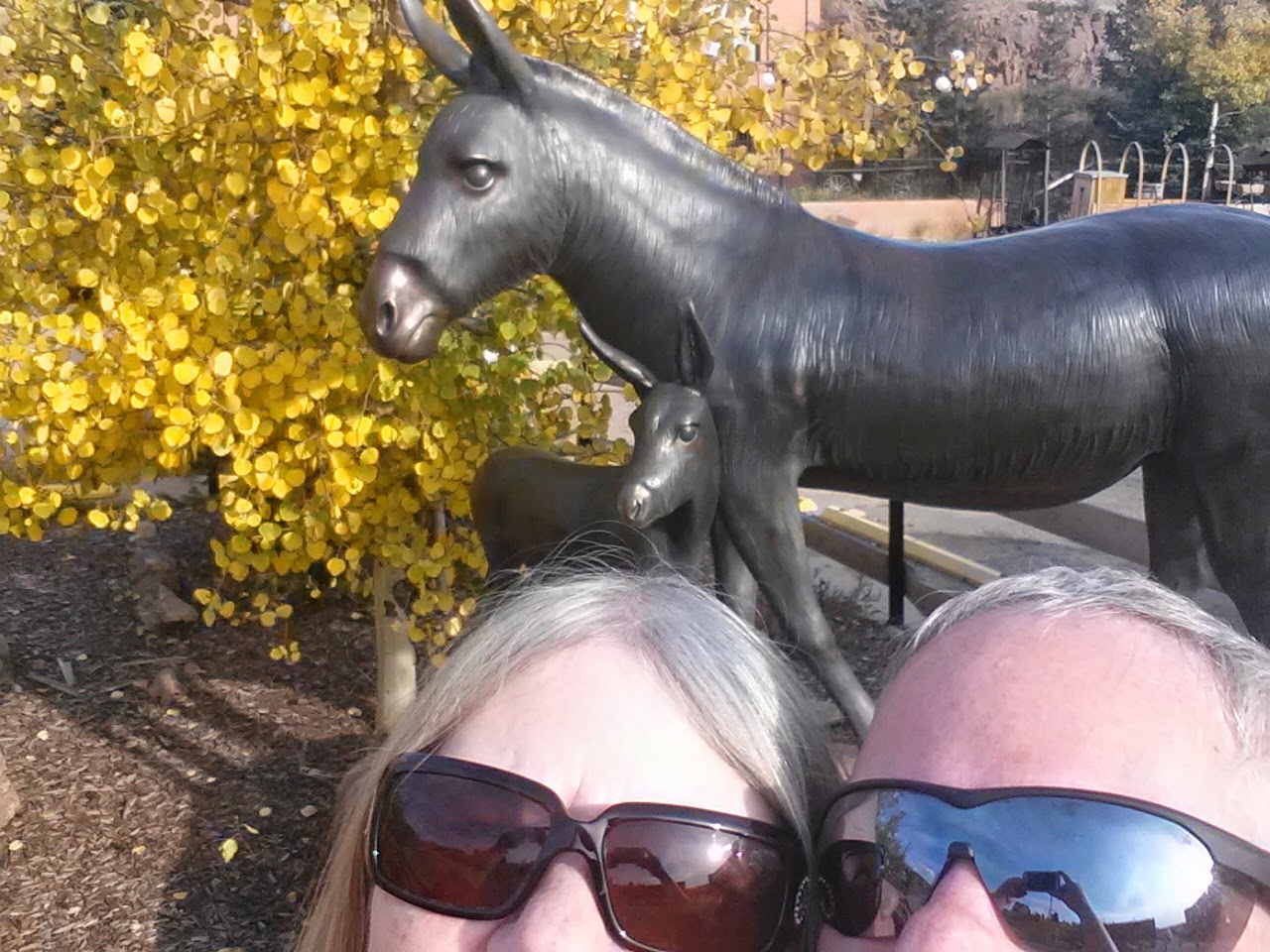 |
| Looking southeast at Pikes Peak. |
On the way to Cripple Creek we also stopped at the Florissant Fossil Beds National Monument. The Monument encompasses almost 6,000 acres of grassy mountain valley located on highway 1 just south of Florissant, Colorado.
The Monument is famous for the abundant and well preserved insect, plant and small animal fossils located in its mudstone and shale deposits.
 |
| Fossils removed from Florissant's Fossil beds. |
 |
| Petrified Sequoia stump near visitor center. |
 |
| Petrified Sequoia stump on hiking trail. |
 |
| Highway 1 between Florissant and Cripple Creek. |
 |
| Bennett Avenue, Cripple Creek, Colorado. |
 |
| Cripple Creek, Colorado elevation 9,494 feet above sea level. |
 |
| Flatlander tourists in Cripple Creek. |
 |
| Since 1953, the Cripple Creek District Museum has worked to preserve the history of Cripple Creek. |
 |
| Historic train depot Cripple Creek, Colorado. |
 |
| Antique telephone switchboard. |
 |
| The parlor upstairs in the train depot building. |
 |
| The kitchen upstairs in the train depot building. |
 |
| Miner's cabin, Cripple Creek, Colorado. |
 |
| Surprised miner!! |
 |
| Can you spot the two asses in this pic? |

No comments:
Post a Comment